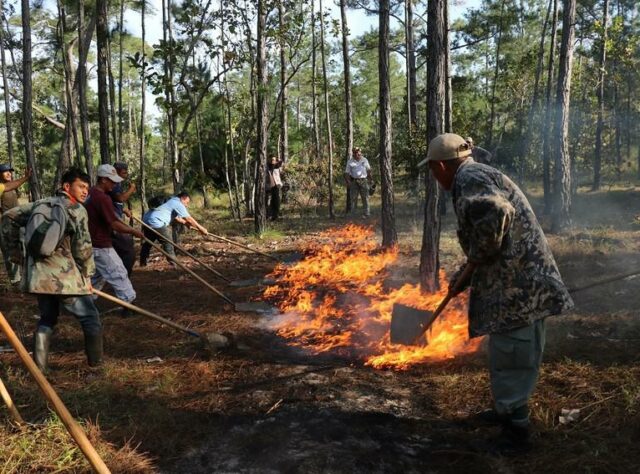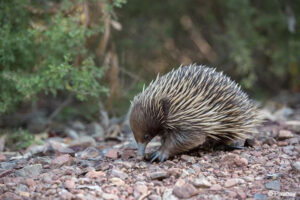
Wildfires have ravaged the Australian landscape since time immemorial, and while these blazes, in the past, have resulted in tragic loss of life and serious injuries, as well as damage to property, farmland and forests, on the whole they have been seen as part of the country’s natural ecology. That natural ecology is now in question as experts warn that climate change is turning parts of the country, and indeed the world, into a tinderbox.
As infernos’ rage with loss to humans, natural resources, habitats and their biodiversity is there anything we can do?
FIRES
Hot and dry; the natural incendiary. Every fire needs a spark to ignite and fuel to burn so the hotter and dryer the conditions in the atmosphere so the greater the likelihood of a fire starting, its intensity and the speed at which it spreads. Over the past several decades, as the world has become increasingly warmer, so has its potential to burn.
Hotter and drier conditions also set the stage for human-ignited fires. People are accidentally igniting fires all the time but when there is a period of extreme weather, high temperatures and low humidity, then it’s more likely that a typical outdoor activity might lead to an accidental fire that quickly gets out of control and becomes a difficult to manage wildfire.
Lessons to be learned
NASA reported that devastating fires in California in 2018 started as a result of sparks flying from hammering a concrete stake into the ground in 100-degree Fahrenheit heat, and sparks from a car’s tyre rim scraping against the asphalt after a flat tyre. These sparks quickly ignited the dried-up vegetation made extremely flammable by the extreme heat and low humidity, contributing to the uncontrollable spread of fire. These conditions make it more likely for agricultural fires to get out of control also.
NASA also suggests that another consequence of the warming world on inferno fires could be the result of warmer night time temperatures allowing fire to burn more intensely and allowing them to spread over multiple days where previously, cooler night time temperatures might have weakened or extinguished it after only one day.
CLIMATE
Since 1880, the world has warmed by 1.9 degrees Fahrenheit (1.09 degrees Celsius), with the five warmest years on record occurring in the last five years. So it is no coincidence that the wildfire seasons have lengthened across a quarter of the world’s vegetated surface. There are many reasons why fires start accidentally – for instance sparks as mentioned above and other human activities such as a simple BBQ in the wrong place. But natural phenomena are also responsible for fires – such as lightning strikes as resulted in 5.1 million acres being burned in Alaska in 2015. Researchers found that unusually high number of lightning strikes occurred, generated by the warmer temperatures that cause the atmosphere to create more convective systems — thunderstorms — which ultimately led to ferocious fires.
Wildfires worldwide and the resulting smoke emissions and burned areas have been observed by NASA satellites from space for two decades and researchers and scientists are beginning to draw into focus the interplay between fires, climate and humans.
HUMANS
Long-term trends of fire certainly point to human land management. Globally, somewhere on Earth is always on fire — and most of those fires are set by people, either accidentally in wildlands, or on purpose, for example, to clear land or burn agricultural fields after harvest.
As one scientist put it:
“Humans and climate together are really the dual factors that are shaping the fires around the world. It’s not one or the other.” – Jim Randerson
Fires impact humans and climate in return. For people, beyond the immediate loss of life and property, smoke is a serious health hazard with long-term consequences to health. Another disastrous impact on the environment resulting from forest fires is contamination of local drinking water. If the water catchments are polluted, and or treatment centres damaged, then this can lead to longer-term threats to drinking water on a serious scale.
Fires of all types reshape the landscape and the atmosphere with implications for many decades to come.
WILDLIFE
Wildlife of course is swept up in the fire’s thrall but there is a little heartening news that perhaps we can take some comfort from. Recent research has shown that a variety of wildlife reacts to smoke, instantly putting them on red alert and ready to flee. In Australia, experiments have shown smoke also awakens animals (the research was on Long-eared Bats and marsupial mice), enabling their escape from fire.
The research goes on to say:
“Other species detect fire for different reasons. Fire beetles from the genus Melanophila depend on fire for reproduction, as their larvae develop in the wood of burned trees. They can detect fire chemicals at very low concentrations, as well as infrared radiation from fires. The beetles can detect very distant fires -one study suggests individuals of some species identify fire from 130 km away!”

Short-beaked Echidna – Pixabay
Once an animal becomes aware of an approaching fire, it decides whether to flee or stay. Kangaroos and wallabies tend to hasten to dams and creek lines while other animals may choose to stay put seeking refuge in burrows or under rocks. Using such tactics animals may survive.
“Perhaps because of the risks of moving through an exposed landscape, several Australian mammals have learnt to minimise movement following fire. This might allow some mammal populations to recover from within a fire footprint. Native mammals have been found hiding in beds of ash after fires.”
As the current fires have made brutally clear, climate change is increasing their scale and intensity. This reduces the number of small refuges such as fallen logs, stones and burrows where wildlife could take refuge and increases the distance animals must cover to find new habitat with fewer options to direct them to safer places.
There is no question that the fires will result in catastrophic loss of wildlife but hopefully we have a lot to learn about how Australia’s wildlife detect and respond to fire. Filling in the knowledge gaps might lead to new ways of helping wildlife adapt to our rapidly changing world.
Supporting our partners in the climate crisis
WLT supports 30 overseas partner organisations across the world and fire management is a key issue for them. WLT has provided emergency funding in some cases, but on the whole we work with our partners who do their best to keep on top of wild fires and act quickly if the threat arises.Wildfie

Wildfire in Patagonia © José Maria Musmeci
WHAT YOU CAN DO?
Support our project partners to protect reserves and take swift action against fire
Keepers of the Wild
If you’ve generously donated to one of our land purchase appeals to help safeguard some of the world’s most threatened habitats, please consider continuing your support by donating to our Keepers of the Wild programme. With your help, we can fund more Keepers of the Wild, equipping them with the resources they need to combat fires. They are the eyes and ears of the forest, patrolling reserves, assessing the potential threat of wildfires and dealing with them if they occur. They also work tirelessly with local communities to minimize the danger. £5,000 will fund a Keepers of the Wild ranger for one year
Support WLT’s Action Fund
The Action Fund was set up by WLT as a means of flexible funding for any of our partners’ urgent conservation projects and emergency assistance. Thanks to our supporters, we have been able to help our partners protect more land and be on the alert for fires, meaning that many threatened species now have a brighter future.
You can make a one-off donation to the Action Fund here
Become a WLT Friend
Many donations to the Action Fund come from WLT Friends who pledge regular donations every month. For just £5 a month you can Become a WLT Friend today to help provide urgent assistance to the conservation projects that need it most.
